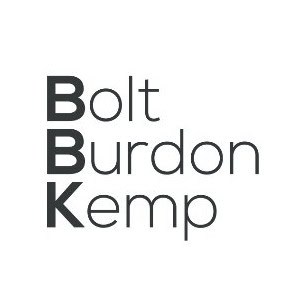
Using the Pre Action Protocol to the Claimant’s advantage
I represent individuals in their personal injury claims in situations where they have suffered catastrophic injury in an accident that wasn’t their fault.
I often find that Defendants will fail to respond on time to initial letters of claim, provide vague responses that lead to ambiguity in the proceedings and fail to engage in the process, such that it is made more difficult than it needs to be. All of these issues cause unnecessary uncertainty and worry for the injured person, which actually compounds their injury and what they have been through.
It is all too easy to allow the Defendant to get away with such actions and simply react as and when they do decide to engage. I consider the Personal Injury Pre Action Protocol (“the Protocol”) an incredibly useful tool which we, as Claimant lawyers, can use to push back at the Defendant and proactively progress the claim.
The Protocol can be used as a tactic to force the Defendant to engage in litigation in a productive and cooperative manner, resulting in claims being progressed more effectively and reaching the best settlement for clients at the earliest opportunity.
What is the Protocol?
The Protocol sets out the conduct that the Court will normally expect of parties before court proceedings are issued. It is important that the Protocol is not ignored because the Court may take any failure to comply with the Protocol into account when making decisions in respect of the claim and the question of costs, once proceedings have been issued at Court.
Early Issue vs Late Liability Decision
The Protocol recommends that Defendants be given three months to investigate a claim and provide their decision in respect of liability (i.e whether they are responsible for the accident) after they have received notification of the claim. Whilst the Protocol acknowledges that this may not always be possible, particularly where a prospective Claimant consults a solicitor shortly before the time limits to bring their claim expire, the parties are encouraged to look at other ways of complying with the Protocol, such as agreeing an extension of time for service of the court papers or asking the Court for a stay of proceedings (essentially pausing the proceedings).
If the Claimant issues proceedings before the end of this three month investigation period, it is likely that the Defendant will argue that the claim has been issued prematurely and the Claimant should be denied the costs of issuing proceedings, as it was in breach of the Protocol.
Just as Defendants are quick to draw premature issue of a claim to the Courts attention, Claimant solicitors should act promptly to issue proceedings where Defendants are late in providing their decision on liability. This will mean that the case is not delayed due to a failure of the Defendant to respond on time. It is important to resolve the issue of liability as soon as possible. Not only does this provide certainty to the injured Claimant, but it will also then make it easier to obtain early interim payments to help with rehabilitation costs (which I discuss further below).
Response to the Letter of Claim
The Protocol states that a Defendant should acknowledge the letter of claim within 21 days, and confirm the identity of any insurer. If they believe they are not the appropriate Defendant, they should tell the Claimant and identify any other appropriate Defendant. This is important for the Claimant, as if proceedings are issued and the Defendant subsequently denies liability on the basis that they are not the appropriate Defendant, they will then have fewer grounds on which to object to any application to amend the proceedings. It may also be possible to argue that the Defendant should pay the costs of such an application if one has to be made, as if they had complied with the Protocol in the first place, proceedings would have been issued against the correct Defendant from the outset.
The Protocol also says that the Defendant should either admit or deny liability. If the Defendant denies liability for the claim, then they should give the reasons for that denial, and send copies of any documents supporting their view to the Claimant or their solicitors.
Dealing first with instances where liability is admitted, this must be a full admission. A Defendant suggesting that they will ‘deal’ with the claim is insufficient. I often receive replies from Defendants saying that they will deal with the claim on a “without prejudice” basis (i.e. on the basis that the court’s attention cannot be drawn to it). This is not acceptable and can put the injured person at a disadvantage should the Claimant’s solicitor decide not to investigate liability as they wrongly assume that liability has been admitted and then the Defendant openly denies liability later down the line. The Claimant cannot at that point show the Court any correspondence marked “without prejudice” and so cannot explain why they believed that the Defendant had accepted liability. If an element of the claim has not been properly investigated then this leaves the claim and Claimant at real risk, and under serious time pressures to try and get the evidence needed to prove their case in respect of liability.
When faced with this response, I would suggest drawing the Defendant’s attention to the fact that failing to provide a full admission is in breach of the Protocol and that if an admission is not received, Court proceedings will be issued because they are in breach of the Protocol. I find that that in most situations, Defendants will provide a full admission. If they do not, then I issue proceedings and the Defendant is then forced to provide their formal decision as part of their defence. That is a win win for the Claimant in my view, as one way or another the Defendant is forced to plead their case in full.
Turning now to circumstances where liability is denied, it is important that Defendants provide reasons for their denial together with any documents in support of their denial.
All too often, I will receive a flat denial of liability with no reasons and no documents. This is a clear breach of the Protocol. In this situation, if I require documents to prove my claim, then it is worthwhile making an application for pre action disclosure. As they are in breach of the Protocol, it may be possible to seek the costs of such an application from the Defendant. If you do not need the documents to prove your claim, in my view proceedings should be issued and disclosure can then be dealt with as part of the case management timetable.
The Protocol’s emphasis on Rehabilitation
The Protocol emphasises that rehabilitation is an important part of the process, so that the injured person is put back in the position they would have been had the accident not happened. The parties should consider the question of rehabilitation at an early stage and the immediate needs of the injured person. The Protocol refers the parties to the Rehabilitation Code, which governs this process. I have previously considered the Rehabilitation Code in my blog ‘Think Rehab!’.
Once liability is admitted, it should then be possible to obtain early interim payments from the Defendant, pending a final settlement of the claim, to fund any treatment required by the Claimant. This will ensure that, where possible, they are given the best opportunity to recover from their injury.
The Protocol’s requirements for Expert Evidence
The Protocol expects the parties to co-operate in the instruction of experts. Whilst a joint instruction may not be appropriate in many cases, the Protocol suggests that the Defendant should be provided with the names of relevant experts so that they may be given the chance to object to them.
It is important that this step is followed. If you provide the Defendant with a list of experts who you propose instructing (perhaps three expert names with CVs), then when you seek permission from the Court at the first Costs and Case Management Conference (where the administration to progress the case is dealt with), the Defendant will have fewer grounds on which to object to you relying on this evidence, if they did not object during the protocol period. If the Court does refuse permission (which is now more common than before because of the emphasis on costs being proportionate to the value of the claim), it will also provide the Claimant with an argument that incurred costs in respect of that expert are recoverable from the Defendant, if it was reasonable to investigate that issue and the Defendant did not object under the Protocol.
The Protocol and Alternative Dispute Resolution (ADR)
The aim of the Protocol is to encourage co-operation between the parties and to avoid litigation, where possible. Litigation should be a last resort. With this in mind, the Protocol states that if proceedings have begun, the parties may be required to demonstrate to the Court what form of ADR was considered. It specifically states that unreasonable refusal to engage in ADR will be taken into account by the Court when deciding who bears the costs of proceedings and on what basis.
Importantly therefore, where a Claimant’s case has been fully explored before issue of Court proceedings under the Protocol, but the parties are unable to agree settlement of the case, it is important to explore ADR with the Defendant. Should they refuse to engage in any form of ADR and fail to provide reasons for their refusal, at the conclusion of a successful claim it may be possible for the Claimant to argue that they should receive their costs on a more favourable basis than the court usually awards, because of the Defendant’s unreasonable conduct.
Use the Protocol as a Valuable Tool in Your Arsenal
In my experience, the Protocol is a useful tool which provides a guide as to how a claim should be run, by both parties, before issuing court proceedings. Most importantly, it is a guide which the Claimant can use to force an early admission of liability, when otherwise this may not be forthcoming; obtain early disclosure of documents to narrow the issues between the parties; and, where a Defendant is in breach of the Protocol, explore arguments for indemnity (more favourable) costs orders.
In my view, all Claimant practitioners should have an in depth knowledge of the Protocol and how it can be used to their clients’ advantage, to resolve matters as quickly as possible. It is of course in all of our clients’ interests that their claims are settled as quickly as possible, and where it would not be appropriate to settle the claim (perhaps where the future prognosis is unclear) the issue of liability is resolved as soon as possible, so the focus of the proceedings may then be on the value and rehabilitation needed, rather than disputes surrounding liability.










